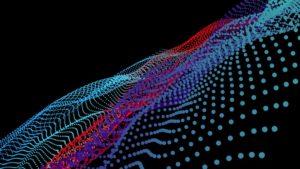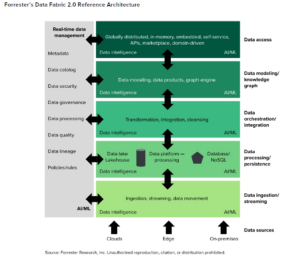
SAP Datasphere is Here to Enable the Data Fabric of Our Lives

(CodexSerafinius/Shutterstock)
The touch, the feel, of … data. Data fabric, that is. SAP is offering a new foundation for businesses building a data fabric architecture. The company has released SAP Datasphere, a solution for automating data management tasks in an open data ecosystem.
SAP Datasphere acts as a single service for data integration, cataloging, semantic modeling, data warehousing, data federation, and workload virtualization. The service is the next generation of the SAP Data Warehouse Cloud and is built on the SAP Business Technology Platform, its cloud applications platform that the company says includes strong enterprise security capabilities like database security, encryption, and governance.
The difference between SAP Datasphere and the now-retired SAP Data Warehouse cloud is the addition of data cataloging that automatically finds, manages, and governs data wherever it lives in a data environment. Another new feature is simplified data replication that updates in real time. There is also enhanced data modeling designed to preserve the business context of data when used in SAP applications. The company says that additional integration capabilities that will link data and metadata from SAP cloud solutions to SAP Datasphere are planned for the future.
“With SAP customers generating 87% of total global commerce, SAP data is among a company’s most valuable business assets and is contained in the most important functions of an organization, from manufacturing to supply chains, finance, human resources and more,” said Juergen Mueller, Chief Technology Officer and member of the Executive Board of SAP SE. “We want to help our customers take the next step to easily and confidently integrate SAP data with non-SAP data from third-party applications and platforms, unlocking entirely new insights and knowledge to bring digital transformation to another level.”
Centralizing data into a data warehouse or lake has proven to be difficult due to the storage and compute costs of managing a large amount of disparate, siloed data located in public clouds, private clouds, and on-prem locations. Organizations are now seeking data management solutions and architectures that allow them to access without duplicating or exporting it all to a central location.
Data fabrics are pre-integrated suites of data management tools that are built as a single layer over an organization’s data repositories. This unified data management strategy can provide scalable data access while preserving the data’s business context and logic.
“For organizations, the value of the business data fabric is the simplified delivery of authoritative data, in business terms, to consumers across highly distributed data landscapes. It unleashes the rapid creation of intelligent data applications and quick spin-up of new analytics and planning projects, so organizations can derive more business value from data assets,” the company wrote in its solution brief for SAP Datasphere.
As part of this announcement, SAP also named four initial strategic partners for integrations that will enrich the SAP Datasphere and securely combine SAP and non-SAP data, the company said. Collibra will have a tailored integration that will allow customers to build a complete data catalog of all data in their landscape. Confluent is another partner and will connect its data streaming platform to SAP Datasphere to link with external applications in real time. A partnership with Databricks will enable users to integrate a Databricks Data Lakehouse with SAP software. Finally, DataRobot customers can leverage multimodal automated machine learning capabilities on top of SAP Datasphere.
“Everybody wants access to SAP data, so leveraging partnerships among tech suppliers is absolutely necessary for a comprehensive data strategy,” said Dan Vesset, group vice president of data and analytics market research, IDC. “Organizations today live in a world where a multi-cloud, multivendor and off- and on-premise data landscape is the norm. SAP is taking a new approach by partnering with a select group of leading partners, treating third-party data as a first-class citizen to better meet the needs of customers.”
“Databricks and SAP share a vision to simplify analytics and AI with a unified data lakehouse. Thousands of organizations across every industry use Databricks Lakehouse for data engineering, data warehousing, data streaming, data science, and machine learning. Now we’re bringing together the worlds of enterprise SAP software data and analytics and the Databricks Lakehouse,” said Adam Conway, SVP of product, Databricks. “We’re excited to integrate with the SAP Datasphere solution to help simplify our customers’ data landscape, enabling them to share data while preserving critical business context.”
SAP Datasphere is available now. Existing SAP Data Warehouse Cloud tenants will automatically transition to SAP Datasphere with no additional steps or migrations required, according to SAP.
Related Items:
Data Fabric Brings Data Together for Timely Decisions
Data Fabric Maturation Means More Shrinkwrap, Fewer Consultants
These 15 Data Fabrics Made the Cut in Forrester’s Wave
































